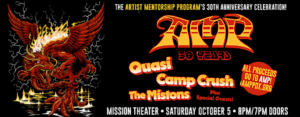Written By: Ashley Meza
When you walk into your local Nectar, one of the first things that you see is the flower wall full of numerous unique strains. Some may think, how is it that there are so many strains in the first place? Many come in wondering just that – and the answer is that we have landrace strains to thank for that!
What is A Landrace Strain?
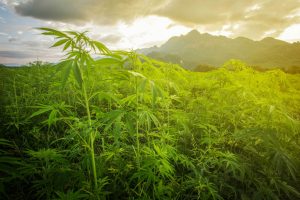 Landrace strains are strains of cannabis whose genetic makeup remains relatively close to the original plant; in other words, they are the original genetic foundation of modern cannabis hybrids. This is the cannabis your grandparents were toking on! They have naturally evolved over thousands of years and have domestically adapted to different geographic locations. Adapting to the local environment shaped the properties and features of the numerous phenotypes of landrace strains, with the first factor being climate affecting whether the plant will be a sativa or an indica strain.
Landrace strains are strains of cannabis whose genetic makeup remains relatively close to the original plant; in other words, they are the original genetic foundation of modern cannabis hybrids. This is the cannabis your grandparents were toking on! They have naturally evolved over thousands of years and have domestically adapted to different geographic locations. Adapting to the local environment shaped the properties and features of the numerous phenotypes of landrace strains, with the first factor being climate affecting whether the plant will be a sativa or an indica strain.
Landrace sativa strains evolved mainly in warm, tropical, jungle environments, like Asia, North Africa, and Latin America. They grow taller with larger internodal distances compared to other types of cannabis plants. Some familiar names of these original sativa strains include:
- Durban Poison – Africa
- Acapulco Gold – Mexico
- Lambs Bread – Jamaica
- Panama Red – Panama
- Colombian Gold – Colombia
- Chocolate Thai – Thailand
On the other hand, indica strains evolved to survive in more hostile, rough, mountainous habitats, like Afghanistan, India, and Nepal. Indica strains tend to bloom quicker and are shorter with broader leaves than other strains. Some original landrace indica strains include:
- Afghani – From multiple mountainous areas in Afghanistan
- Hindu Kush – Pakistan and Afghanistan
- Sheberghan – Afghanistan
- Mag – Iran
- Puna Buddaz – Hawaii
- Moloka’i Purpz – Hawaii
Why Landrace Strains Are Difficult To Find
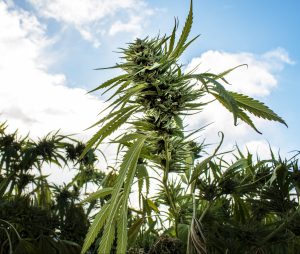 In more recent decades, landrace strains have been bred and crossed with others to strengthen the best features. Over time, the breeding process has been able to slowly remove unwanted characteristics while maintaining the favored traits to be more consistent in the growing process, like heavy yields and fast bloom times. The results of this breeding process have somewhat changed the original pure genetics of these landrace strains, which can seem frustrating to many old-school cannabis connoisseurs, but without these changes, many of these strains would be rejected by modern farmers because they lack cannabinoid content and other features (taste, potency, bloom times, etc.) that they consider mandatory.
In more recent decades, landrace strains have been bred and crossed with others to strengthen the best features. Over time, the breeding process has been able to slowly remove unwanted characteristics while maintaining the favored traits to be more consistent in the growing process, like heavy yields and fast bloom times. The results of this breeding process have somewhat changed the original pure genetics of these landrace strains, which can seem frustrating to many old-school cannabis connoisseurs, but without these changes, many of these strains would be rejected by modern farmers because they lack cannabinoid content and other features (taste, potency, bloom times, etc.) that they consider mandatory.
In the 1960s and 70s, Europe and North America acquired landrace strains as travel increased. Cannabis is a continually evolving plant, and if you move a landrace strain to a new environment, it begins to adapt to that habitat, these are known as heirloom strains. A commonly known strain that is an heirloom strain is Northern Lights. Possessing the Afghani kush phenotype, Northern Lights evolved due to the direct external factors of its new habitat. Original landrace strains have been taken out of their native environment and endlessly crossbred with a variety of other strains to produce newer strains, which is why it’s so hard to find these genetically pure strains nowadays.
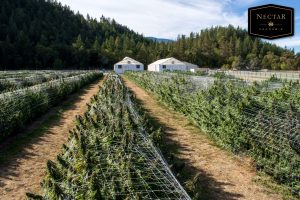 With all the different evolutions happening in cannabis, landrace strains are becoming a unique commodity in the industry and valuable to the world of genetics, especially since cannabis has become more socially accepted. True, pure, landrace strains remain rare to find, not because growers willfully mix these strains and modern genetics, but because they can be picky about which seeds to cultivate, having a preference in plants that bloom faster, produce a heavier harvest, and higher potency levels. There are numerous landrace strains, and not all of them have been found. It’s important to preserve them and continue looking for new indigenous landraces.
With all the different evolutions happening in cannabis, landrace strains are becoming a unique commodity in the industry and valuable to the world of genetics, especially since cannabis has become more socially accepted. True, pure, landrace strains remain rare to find, not because growers willfully mix these strains and modern genetics, but because they can be picky about which seeds to cultivate, having a preference in plants that bloom faster, produce a heavier harvest, and higher potency levels. There are numerous landrace strains, and not all of them have been found. It’s important to preserve them and continue looking for new indigenous landraces.
Nectar’s products are known to be Oregon Grown and Oregon Owned. Many of the different strains we see in our stores are the result of genetically crossbreeding different cannabis plants. Some of the strains we genetically develop are a result of cross-breeding with a landrace strains and so these amazing old world strains live on in the genetic coding of their descendants that sit on our shelves.
20 Descendants of Historic Landrace Strains
- GSC (formerly known as Girl Scout Cookies) – Durban Poison x OG Kush
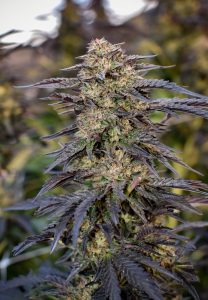
- GMO Cookies – GSC x Chemdawg
- Gelato – Thin Mint GSC x Sunset Sherbet
- Key Lime Pie – GSC Phenotype
- Northern Lights – Afghani x Thai
- Super Silver Haze – Northern Lights x Skunk x Haze
- Jack Herer – Northern Lights x G-13 x Trainwreck
- Super Skunk – Northern Lights x Power Plant x Skunk #1
- Blueberry – Purple Thai x Thai
- Blueberry Muffin – Blueberry x Purple Panty Dropper
- Blue Dream – Blueberry x Haze
- Blue Diesel – Blueberry x NYC Diesel
- OG Kush – Chemdawg x Lemon Thai x Hindu Kush
- Obama Kush – Afghani x OG Kush
- Headband – OG Kush x Sour Diesel
- SFV OG Kush – OG Kush x Afghani
- Cherry Pie – Grandaddy Purple x Durban Poison
- Kush Cake – Cherry Pie x GSC
- Cherry Chem – Cherry Pie x Chemdawg
- Grape Pie – Cherry Pie x Grape Stomper
Landrace strains of cannabis are truly the ancestors of the modern forms of cannabis we all love to enjoy. They are an integral part of weed’s history and may hold some answers to its future! One thing is for sure though and that is they are incredibly interesting to study. If this article has peaked your interest in learning more about cannabis plants and their history read our articles on CBD, CBG, CBN, Terpenes, THCa, and why we misuse the classification of indica vs sativa so you can further learn about the wild world of cannabinoids!


